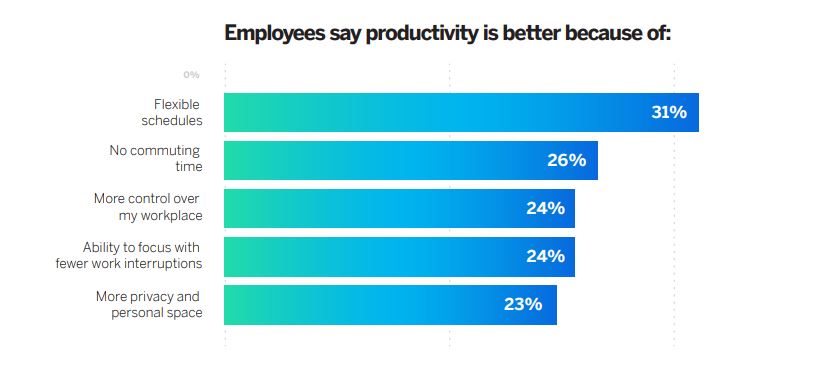Remote work and productivity: Why employee listening is key
Research by Qualtrics found that although employees were more productive working from home, they are now keen to return to the office at least a few days a week.
Why You Should Care
According to a survey by Qualtrics, 51% of employees have been more productive while working from home during the pandemic — and their managers agree.
However, 26% have also felt disconnected from their colleagues and are, therefore, keen to return to the office at least some of the time.
So how can managers ensure the return to work suits their employees' workplace experience?
The pandemic has completely disrupted the way people work. Employers who had previously decried working from home – on the basis it was just an excuse for slacking off from work without manager oversight – were forced to close their offices and allow their staff to work remotely full time.
In fact, workers across the world have demonstrated that they can actually work as well, if not better, from home.
But, as they start to look beyond the pandemic, the next step for businesses is figuring out how to emulate and continue this productivity in the new normal.
Experience management company Qualtrics’ ‘Future of Work’ 2021 report suggests HR teams and leaders should listen to employees and not trying to implement a one size fits all approach.
“That will create better experiences in the future and will differentiate between good and great companies,” wrote Qualtric chief people officer Julia Anas in the report’s introduction.
Remote work drives productivity
According to the survey, 51% of employees believe they have been more productive working remotely, while only 15% thought they had been less productive. The pros of remote working on productivity were even more pronounced among Gen Z and millennial workers.
Managers agree; 55% of them said the staff who directly report to them have been more productive while working from home, while 29% said they had been as productive as in the office.
Qualtrics’ report is based on a March 2021 survey by XM Institute of 4,000 employees in the US, UK, Ireland, Australia, and New Zealand who were employed throughout the pandemic.
But what is driving increased productivity as a result of working from home?
The report found that 31% had benefitted from a flexible schedule, 26% enjoyed the lack of commuting time, and 24% said they had fewer work interruptions while working from home.

Hybrid working IS THE FUTURE
Despite the productivity gains, the experience hasn’t been smooth sailing for employees.
While 35% of workers told Qualtrics they felt more connected to their coworkers than before, 39% said they felt the same level of connection, and 26% felt less connected.
Employees have missed spontaneous interactions with colleagues, the comradery of being around others and exposure to diverse perspectives and ideas.
Therefore, it is no surprise that now, more than 12 months into the pandemic, employees are keen to find a way to flexibly get back into the office.
“While most employees don’t want to work from home exclusively, the consensus is clear: they don’t want to give it up completely,” Qualtrics’ report states.
Only 7% of those surveyed wanted to work from home full time, but 59% supported some form of hybrid working arrangement.
Managers were equally supportive about hybrid working with 70% saying they wanted hybrid working, compared to 18% supporting full-time office working and 12% in favor of fully remote working models.

What will the office of the future look like?
However, employees want to return to an office that looks – and feels – fundamentally different to the one they left in March 2020. This is central to continuing their productivity success and what they want to gain from their experience of working in the office.
According to Qualtrics’ survey, 46% of employees want to see the layout of their office change. Those working in large, open offices are particularly keen for an office redesign; in fact, they are 30% more likely to want a new layout than those already with divided offices.
Employees are seeking more quiet and private working spaces, more space between desks, as well as more flexible meeting and collaborative areas.
They also want to have on-demand space to allow face time with colleagues and clients, as well as access to physical office resources as and when necessary.
Therefore, in formulating their return-to-work policies, businesses need to listen to employees and their needs in order to get the best out of their staff.
However, Qualtrics’ report notes that future success of companies is contingent on them continuing to listen to employees and taking action based on the feedback not just in 2021, but in the years and decades to come.
Sign up to the UNLEASH Newsletter
Get the Editor’s picks of the week delivered straight to your inbox!

Chief Reporter
Allie is an award-winning business journalist and can be reached at alexandra@unleash.ai.
